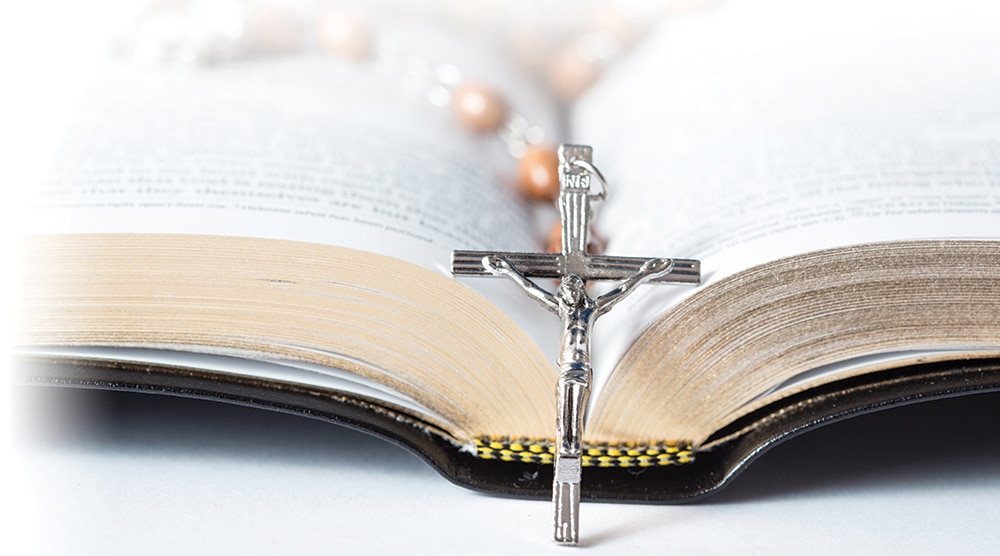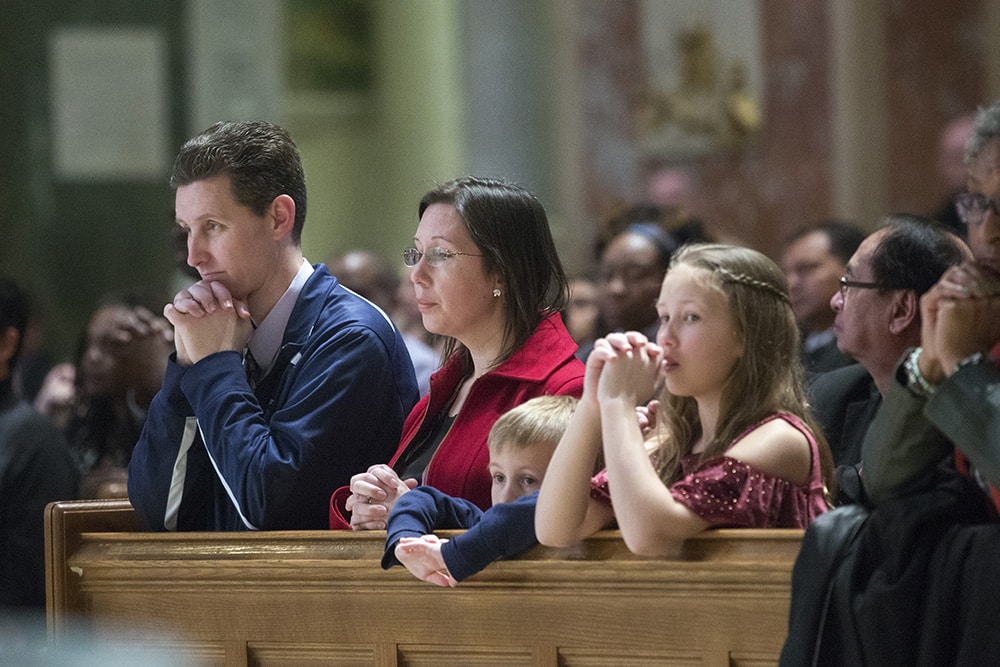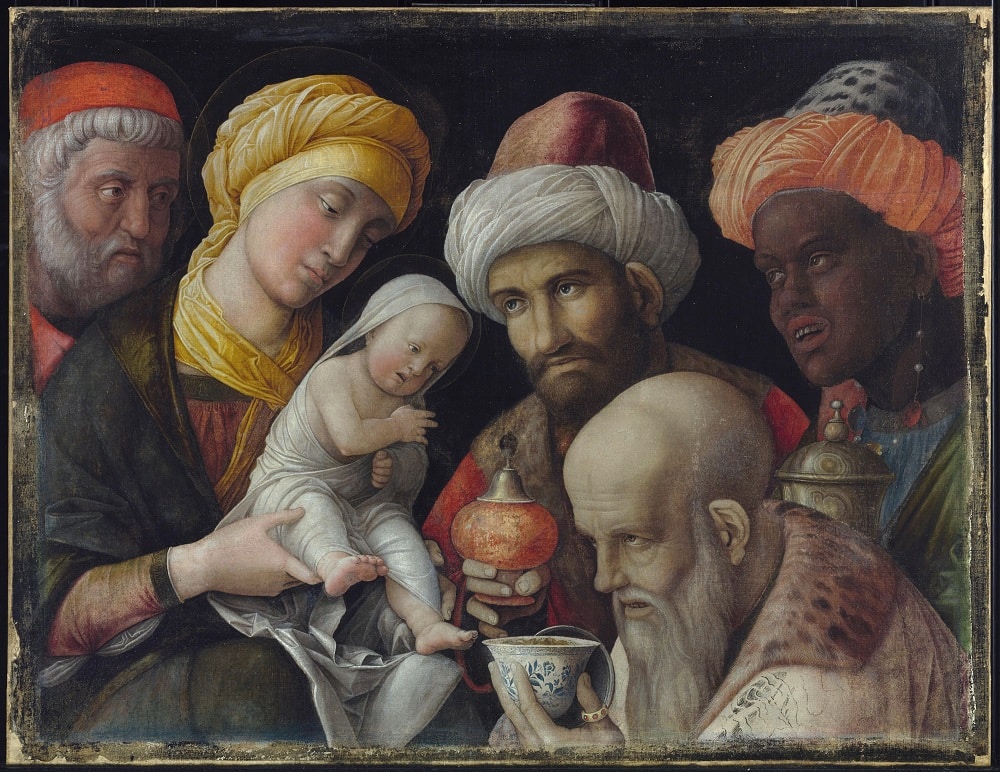For most of us, nevertheless, the holidays are a time of hustle and bustle, of big meals, noisy parties, much coming and going — and not a lot of peace. I don’t mean to spoil the fun, but if you’re looking for a little peace at a time when it may be in short supply, I have a remedy to suggest: Try saying the Rosary.
The Rosary is both the simplest of vocal prayers and also in some respects the most sophisticated. Archbishop José Gomez of Los Angeles, newly elected president of the U.S. bishops’ conference, calls it “a prayer of the heart, a way of contemplation.” Pope St. John Paul II called it his favorite prayer.
Some people nevertheless refrain from saying the Rosary because, quite simply, they don’t know how to do it. Some may have taken a shot at it years ago, but they found the exercise flat and disappointing and soon gave up. Others, believing the Rosary too old-fashioned for their taste, may never have made the attempt. But if you are looking to carve out a few peaceful minutes for yourself — whether now or any other time — I say give the Rosary a try.
But be smart about it and consult a guide, such as the recently published “Praying the Rosary with St. John Paul II,” written by Gretchen R. Crowe and published by OSV. This little volume can be a big assist to people coming new to the Rosary as well as to people who’ve been praying the Rosary with great spiritual profit for many years.
(Disclosure: Insofar as a I am a contributing editor of Our Sunday Visitor, Gretchen Crowe, editorial director for periodicals at OSV, is one of my bosses. Not only that, she is also a good friend. It’s a dandy little book just the same.)
The volume, composed last year while Crowe was waiting for the birth of her second child, naturally is arranged according to the 20 decades of the four mysteries of the Rosary — Joyful, Luminous, Sorrowful and Glorious. Each section contains a brief “spiritual fruit” that reflects the virtuous trait embodied in the mystery and reflected in the life of John Paul II, a Scripture passage for reflection and an excerpt drawn from the saint’s writings.
Moving and sometimes dramatic photos accompany the text. There is also an impressive foreword by Andreas Widmer, a former Swiss Knight, now at The Catholic University of America, who began praying the Rosary at the encouragement of John Paul II, and a brief biographical sketch of that pope by me.
In this way the book, like the Rosary, takes you step by step through the life of Jesus. It doesn’t replace the Gospel narratives but supplements them, helping the reader interiorize them and become better acquainted with Christ. As St. John Henry Newman also once said of the Rosary, it “gives us the great truths of his life and death to meditate upon, and brings them nearer to our heart.”
So if the hurly-burly of this season or any other is getting to you, take a few minutes to sit down, collect yourself and say the Rosary. This little book can help.
Russell Shaw is a contributing editor for Our Sunday Visitor.







